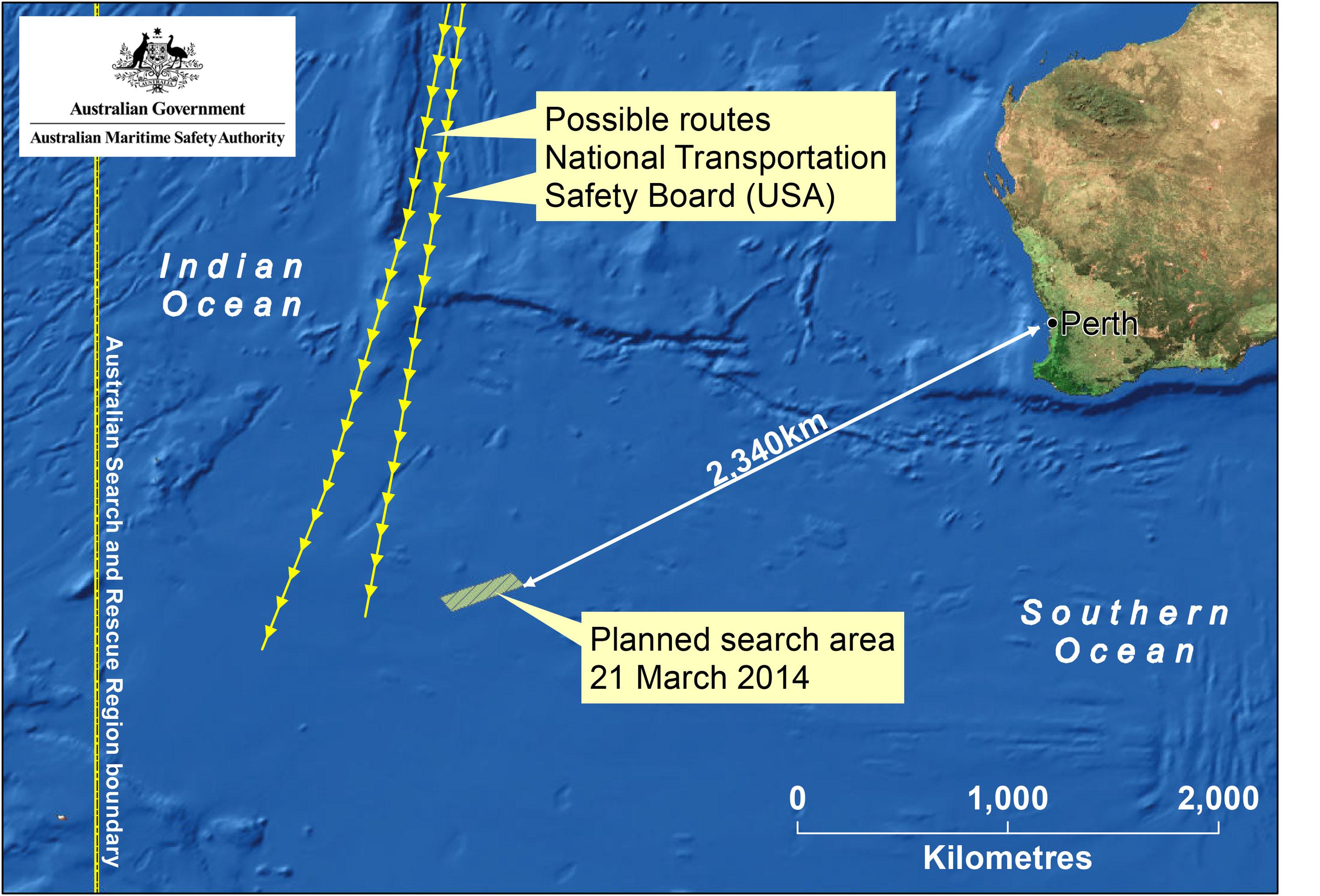For a second day, ships and aircraft scoured a patch of sea 1,500 miles southwest of Australia, looking for two large pieces of debris that were spotted by satellite five days earlier. The search came up empty-handed, even as evidence remained scant that the debris was even wreckage from missing Malaysia Airlines Flight 370.
So what next? According to search-and-recovery experts, the fact that nothing has been found in the area represents not a failure, but a valuable piece of data: we’ve managed to whittle down the universe of possibilities. “Negative information is information,” says Colleen Keller, a senior analyst at Metron Inc. (Keller and I met at CNN, where we’ve both been on-air to discuss MH370.)
Metron uses mathematical tools such as Bayesian probability to help clients model the outcomes of decisions. In 2011, the company was asked to re-evaluate the search parameters for the Air France 447 investigation. The Airbus A330 had disappeared over the Atlantic in the middle of the night, and search crews had spent two years scouring the seabed using a grid defined by a calculated probability distribution. Nothing had turned up. Metron rejiggered the parameters using a new base line assumption: What if the acoustic pinger inside the black box hadn’t actually ever been activated, as searchers had previously assumed? Underwater robots were set to work on the newly calculated grid, and in less than a week the wreckage was found.
In the case of MH370, Keller says, searchers right now have to assess a different kind of probability matrix, one that deals with the more basic issue of just what kind of case this will turn out to be. Did the plane have a mechanical failure and crash? Was it hijacked? Did the pilot (or pilots) take control and abscond with the plane? “They’re trying to get down to what evidence we have, and what theories are supported by that data,” she says. “To come up with a list of all the scenarios, and try to assign a numerical probability to each.”
The problem with the probabilistic approach is that it is based on what has happened in past experience—and when you’re dealing with human actors, there’s always the possibility of innovation and surprise. When this happens, it’s said that someone has gotten inside your “OODA loop.” OODA stands for Observe, Orient, Decide, and Act. “If you can analyze the situation faster than your enemy, you can outmaneuver him,” Keller says. “Not necessarily to physically outmaneuver him, but to take actions that put him off his guard.”
U.S. Army ground troops in Iraq got on the wrong side of the OODA loop when they faced insurgents deploying IEDs, she says. “They’d come up with an idea that is brilliant and cheap, and we’d spend billions of dollars trying to come up with a solution,” Keller says. “We were always on the defensive.” By innovating new kinds of weapons and new ways of using them, the insurgents were modifying our troop’s probability matrix before they could realize it and react.
For many, the detection of what may be aircraft wreckage in the southern Indian Ocean has spurred hopes that the disappearance of MH370 will turn out to be the result primarily of equipment malfunction. But in Keller’s assessment, “human intervention looks to me like the most likely explanation” of the plane’s deviation from its planned route. If that’s the case—if MH370 was taken by agents who had a plan, a motive, and an objective—then investigators have a big OODA loop problem. While the perpetrators (if they are still alive) are able to follow the meanderings of the search process 24/7 on the news outlets, investigators know nothing at all about them. They don’t know their identity, their motives, their capabilities, or their physical location.
It’s an extreme example of what’s known as “information superiority.” Centuries ago, armies struggled mightily to obtain geographical superiority over one another—to take the high ground so that they could lob their cannonballs onto the enemy’s heads. Today, it’s the informational edge that’s crucial. If you know more about your opponent than he knows about you, you can get inside his OODA loop. “You can act to throw him off balance, to take a course of action that he otherwise might not want to do,” says Keller. “It’s a lot like playing chess.”
Of course, in the case of MH370, we don’t know what game were playing—or even, for certain, whether we’re playing at all.
Read the rest of Slate’s coverage of Malaysia Airlines Flight 370.
